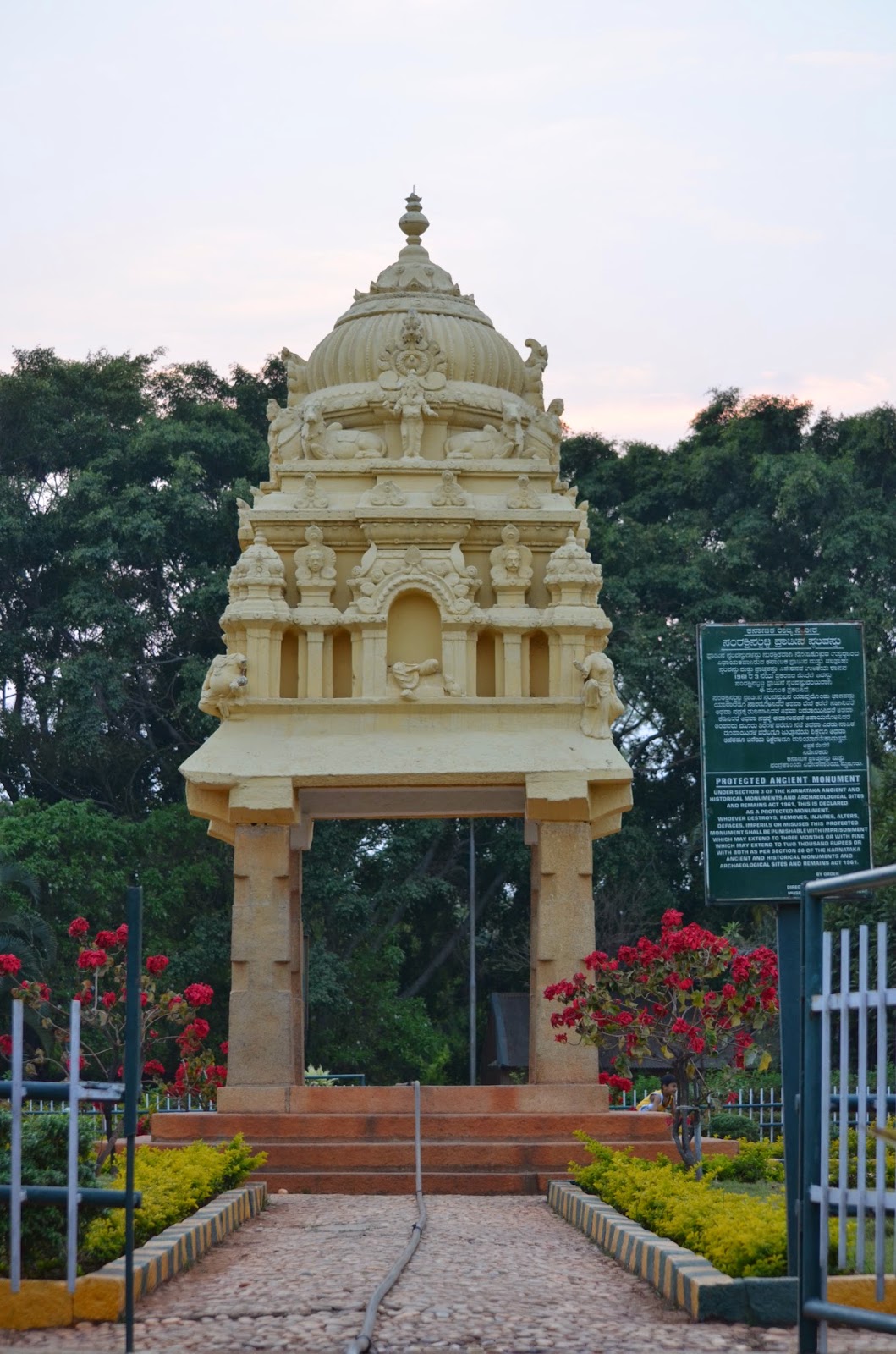The story of the four Kempegowda Towers that defined the boundaries of Bangalore has always fascinated me. The city having outgrown the boundaries defined then, I realize I now live beyond the North Western Tower that the visionary founder of the city placed in what is today called Sadashivnagar.
Being the most accessible of the four towers (to me), I visited the park in which the tower is located, one evening last week. To get there, you have to go past Cauvery Theater on Bellary Road and head towards Mekhri Circle. Don't take the underpass but the road on the left which is beside the underpass. You will come across the Sri Ramana Maharshi Shrine & Meditation Hall and beside this building is the park where the NW Kempegowda Tower is located.
The main entrance to the Kempegowda Tower Park is on 11th main, which is a left turn from Bellary Road after the Sri Ramana Maharshi Shrine entrance. There is ample space available on this road for parking.
Alternately, you can use the entrance right next to the Ramana Maharshi shrine, especially if you have parked your vehicle in one of the earlier roads and are walking down Bellary Road.
It is quite a well-maintained park, with lots of trees and flowering shrubs. There is a stone plaque mentioning that the first sapling in the initiative to plant 1 lakh saplings in Bangalore was planted here by the then Chief Minister - Sr. S M Krishna, in 2002. The tower is deep-set inside the park, and although at an elevation - but is still not easily visible from the road.
The Tower itself has undecorated stone pillars but the gopura has sculpted images of gods and goddesses. Some of these images are broken and have head and torso missing. Fortunately, there is no sign of graffiti marring the tower.
On initial inspection, it seemed that the theme of the sculptures was Lord Shiva and family; but on perambulating to the other side, I spotted what was unmistakably a Krishna on the West side.
The park attracts a lot of birds. I distinctly saw a couple of koels and heard a few other birds. Another visit in the early morning hours is called for. I also noticed the customary fitness enthusiasts, but the park wasn't crowded at any point in time when I was there.
And then, in this pristine and sylvan environment, an ugly concrete structure caught my eye. A closer look and I was quite intrigued by the inscription on the embedded stone tablet. It proclaims that ‘The Bangalore longitude station of the Great
Trigonometrical Survey was situated 38 feet north of the baseline
station.’ The stone tablet credits Capt W M Campbell, RE, 1875 – 76 and
Lt W J Heavyside RE 1887 – 88 with being ‘observers.’ When I got back home and googled "Great Trigonometrical Survey", Wikipedia had this to say - "The Great Trigonometric Survey was a project of the Survey of India throughout most of the 19th century. It was piloted in its initial stages by William Lambton, and later by George Everest. Among the many accomplishments of the Survey were the demarcation of the British territories in India and the measurement of the height of the Himalayan giants: Everest, K2, and Kanchenjunga.
The Survey had an enormous scientific impact as well, being responsible
for one of the first accurate measurements of a section of an arc of longitude, and for measurements of the geodesic anomaly." The page also had this interesting map produced by the survey. Quite fascinating, and I have downloaded a couple of reports on this survey and its impact for later reading.
Source : http://en.wikipedia.org/wiki/Great_Trigonometric_Survey
So there is a little bit of British History and geology associated with this park as well. Here are some links to interesting related articles, in case you want to know more :
http://archive.deccanherald.com/deccanherald/feb152005/spt6.asp
http://thehindujobs.com/thehindu/2003/07/03/stories/2003070309370300.htm
I could not come away without visiting the Ramana Maharshi shrine, an oasis of peace in the middle of a traffic-busy road. The interiors are spacious and ideal for meditation.
I strongly recommend a visit to both the Kempegowda Tower Park and the Ramana Maharshi shrine - sanctuaries of peace in an otherwise bustling city.














The trignometric survey stone is a great find.
ReplyDeletehad been there yesterday. information on your blog was very handy ! thanks for sharing :)
ReplyDelete